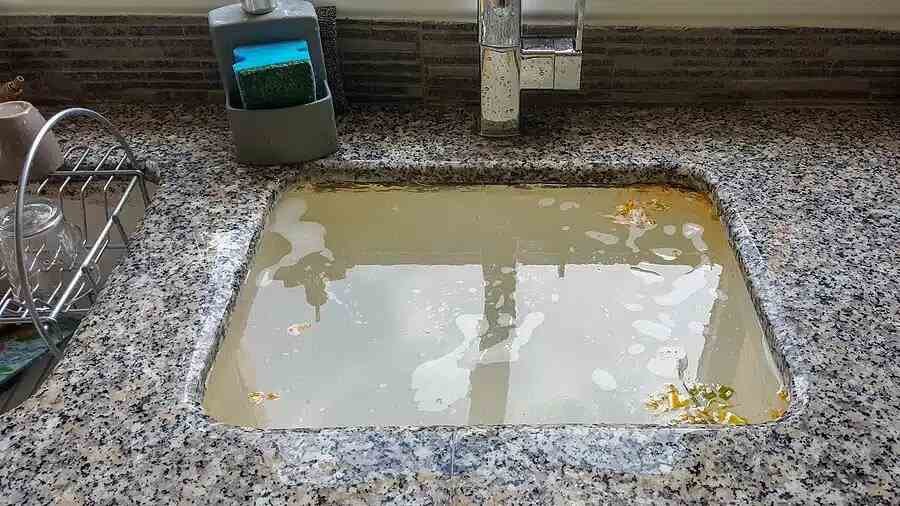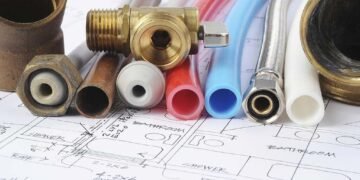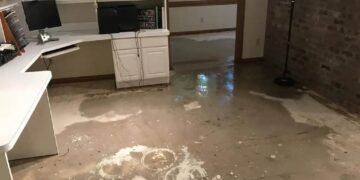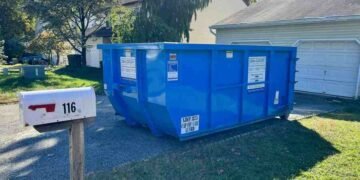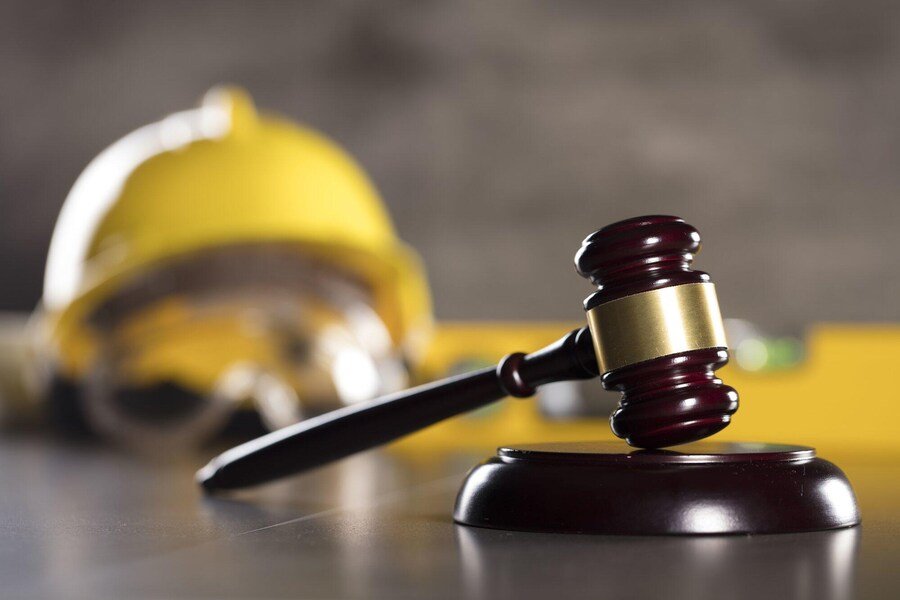Whether you’re a seasoned homeowner or a first-time buyer, unexpected plumbing issues can arise at any time. The odds are that you may not even notice there’s an issue until it has started. This is often the case with clogs and blockages because they happen beneath the surface, inside the pipes.
These types of plumbing problems can occur for multiple different reasons. If you leave them untreated, the results could be catastrophic—both financially and structurally. Water damage has a costly impact, leading to mould growth and weakened foundations over time.
It’s thus important to regularly check your home’s plumbing system. If you aren’t sure what to look for—or don’t know how to tell a minor problem from a serious one—the following are some common signs to be aware of.
Stains around drains
Over time, if not maintained properly, your pipe drains will begin to develop staining around the edges. Some of this is natural build-up from all the water and products that run through them every day. However, extensive staining around drains could be an indicator that something else is going on.
When you begin to notice these types of stains, it’s a good time to inspect the surrounding plumbing. It’s possible all that needs to happen is a thorough cleaning of the area with either a specialty drain cleaner or a household item, such as lemon juice, hydrogen peroxide, and/or vinegar. That said, once you take a closer look at the plumbing if anything appears out of place or the water flow seems irregular, it may be time for more drastic intervention.
Stain build-up around your drains has the potential to cause more serious health problems down the line. It’s better to be overly cautious than risk the well-being of both you and your loved ones.
Gurgling sounds from the drains
Plumbing systems aren’t always shy. Similar to your stomach grumbling when something is wrong, gurgling sounds from your drains may be the first sign of a clog or blockage. When either a drain line or vent pipe is clogged, it prevents water and air from passing through freely. As a result, gas bubbles form and eventually release, causing an audible gurgling noise.
This type of issue can happen in several different places throughout the plumbing system. If the gurgling sound is isolated to one specific drain (like the bathroom), then the clog is most likely inside the P-trap. However, if running water in one room causes the drain in another room to gurgle, then the issue could be inside the main sewer line.
If you do suspect there’s an issue with your main sewer line, contact a professional plumber in Toronto for a proper inspection.
Unpleasant odour from the drainage
When you experience a foul smell coming from anywhere, it’s usually a good sign that something is wrong. This is especially true for your plumbing. In the event an unpleasant odour is coming from one of your drains, the first thing you should do is try and find the source. In some cases, it could be a simple matter of leaving food in the sink overnight, not rinsing the drain properly after use, or it’s just time for a proper deep clean.
If you are unable to pinpoint the cause, then it’s possible there may be a more serious issue. Some common causes of a poor drain smell include odour-causing bacteria inside the pipes, mould or mildew buildup, a clog preventing proper water flow, and/or escaping sewer gasses.
In each of these cases, the first place you should check is the P-trap. This curved portion of the pipe is designed to keep odours from releasing back up the pipe. If it is dry or there is a clog somewhere in the pipe and/or vent, then the water will not pass through properly, potentially causing odours to release.
Using a quality drain cleaner is recommended for removing any build-up or other odour-causing materials from inside your pipes. If there is a clog or blockage that you cannot remove easily with a proper drain cleaner, then you may need to remove it manually or consider contacting a professional for assistance.
Changes in toilet water level
Everyone has likely experienced this situation at one point or another. Sometimes, no amount of flushing will make the water inside your toilet bowl go down, or worse, the water stops rising altogether.
Both of these situations are a clear sign that something is blocking water flow to your toilet. When this happens, it’s important to remain calm and avoid over-flushing the toilet. This could lead to even more problems that you will inevitably need to clean up later.
Thankfully, both a high and low water flow inside your toilet is usually easy to fix, assuming there are no serious underlying issues. The initial steps you should take are:
- Remove the toilet tank lid: This part of the toilet is often very heavy, so remove it carefully before placing it on a sturdy, flat surface.
- Assess the water level inside the tank: Generally, the water level inside an average toilet tank should sit 1 to 2 inches below the fill valve and overflow tube. This is an indicator that everything is flowing smoothly without any interruption.
- Turn off the water supply: Before taking any further action, it is crucial to shut off the flow of water to the toilet itself. Doing so ensures no excess water will escape while you deal with the current problem.
- Adjust the interior float systems: When the water flow inside your toilet bowl isn’t where it should be, it could mean that the flush valve, ball-and-arm float, or cylinder float needs to be adjusted. All three of these can easily be accessed from the toilet tank.
- Try flushing: Once you’ve made the necessary adjustments inside the tank, try flushing the toilet to see if the water level returns to normal. If it does, then you’ve managed to correct the problem. If the water level remains the same, or worsens, there may be a more serious issue.
After checking that things in the toilet tank are functioning properly, irregular water levels could then mean there’s a clog inside the plumbing system. If you suspect there is a blockage interfering with that water flow, the next step is to try plunging the toilet. This helps break up any materials that are stuck, allowing for water to flow freely again. Depending on the size of the blockage, it may take several attempts to effectively clear out the problem.
Keep an Eye on Clogs and Blockages
Although they can be difficult to notice at first, clogs and blockages have the potential to become major problems if left untreated. When you suspect there is something interfering with the water flow within your home, always take time to inspect it. Often, these issues can be resolved in a few minutes, saving you both time and money down the road.

